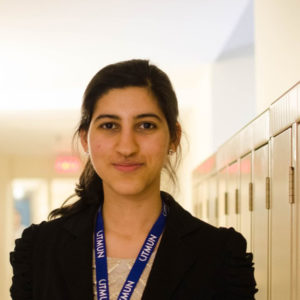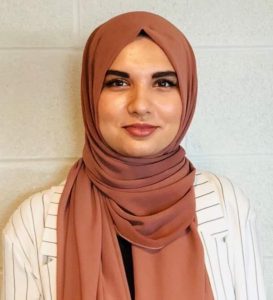Hear from Medicine & Global Health Students
Welcome to Classroom 213: An Introduction to TRN136
In a modestly-sized classroom on the second floor of the Gerald Larkin Building, you will be introduced to an expanse of thought, perspective and brilliance. Enter Room 213 and you will witness the mosaic of individual experience: diversity erupting within and without each student and the outcome is incredible. Before you know it, the faces of the strangers in the room will belong to the most dialed contacts in your phone. The blackboard will not be brimming with mathematical equations, scientific jargon or diagrams of cellular division – a few words introducing the topic of discussion for the day will be neatly chalked and this practice will last until the very last day of TrinOne, each week the topics shuffling from one to the next.
Room 213 houses TRN136 – Canadian Health Policy in the Global Context, one of the two courses that make up the Anne Steacy Medicine & Global Health (MGH) stream in the Trinity One Program. It is a course that will challenge your perspectives on the policies, systems, and practices that facilitate healthcare in our societies. Engaging with your professor and peers, you will spend time debating the efficacy and efficiency of global and national initiatives in addressing health challenges such as universal health care, anti-microbial drug resistance, maternal & child health, Indigenous health, HIV AIDS etcetera.
If you are a natural sciences student, this course will shift the lens with which you traditionally interpret medical research, its outcomes and applications for our most vulnerable populations. The difficult conversations taking place at international stages like the United Nations and the World Health Organization are critically analyzed and for two hours of class, you will transcend the four walls of the University and become leaders in these facets of public policy.
If you come from a social science background, this stream is a beautiful interdigitation of science, policy and as I choose to view it, humanity. It sheds light on the value of frontline human experience in making executive decisions that affect vulnerable communities and addresses how the insulation of centralized institutions result in ill-fitting verdicts for populations without a voice.
This course will awaken (or give rise) to your drive for social justice in healthcare: the conception of medical research, aid and treatment are often well-studied topics but their appropriate delivery to the individuals, families and communities that critically require them is the focal point of this course. In my experience, the MGH stream functioned in the capacity of directing my attention to novel fields of research and initiatives that I had previously left unexplored. This profoundly impacted the direction of my academic pathway: my Programs of Study for the remainder of my degree were selected by taking my experiences within the stream into consideration. The products of this stream – perhaps new interests or simply personal development – are likely to influence the rest of your trajectory at the University of Toronto, most likely in pleasantly unpredictable ways.

What are you studying now?
A couple of months before beginning my first year at university, I decided to apply for the Margaret MacMillian Trinity One Health Science and Society Stream. Once I got in, it just so happened that it was also the first class of my undergraduate degree. I was pleasantly surprised to be in an environment of incredibly motivated, insightful people. There was a depth and dimension to our small-group discussions that I couldn’t find in any introductory biology or philosophy class. It was one of the most academically enriching experiences I’ve had; I was taught to critically engage in a wide variety of topics, and this diversity shaped the trajectory of my remaining university years, where I specialized in molecular genetics and minored in philosophy. Each year, I’ve had my heart pull me in so many different directions, from philosophy to science, research to medical school, mathematics to art. It’s difficult, but I realized that I didn’t need all the answers. I just had to try my best. Alongside the mentorship provided by professors, I earnestly explored my passions until I found equilibrium. Now, in the fall of this year, I will be heading to Oxford university to defend a Master’s in neuroscience.

Trinity One student Amna Zulfigar on TRN 135: Science and Social Choice & Public Good.
“When does life begin?”
“At which stage of human embryonic development should we give these unconscious cells the moral status of a human being?”
“Why do we draw a line between human and animal experimentation?”
One of our most interesting units in TRN135 revolved around the controversy concerning stem cells in scientific research. To understand the dispute, we had to develop an appreciation of the biological mechanics. Stem cells are so-called because they have not yet been localized to a specific part of the body nor correspondingly committed to a designated function. Instead, these cells constitute the raw beginnings from which the rest of our cells derive via various rounds of cell division and differentiation. This is a remarkable property from a physiological perspective especially because they can be used to regenerate those cells lost in sickness, injury, or old age.
The issue lies with regards to the limitations of cell-specification in stem cell division. There are different types of stem cells: adult, embryonic and induced pluripotent. Whereas embryonic stem cells can give rise to virtually any type of cell, adult stem cells can only differentiate into those specific to the organ that they originate from. Even though adult stem cells can be treated with reagents to make them pluripotent, their developmental potential is limited in the face of embryonic stem cells.
The controversy in using embryonic stem cells to target degenerative diseases and cancers does not revolve around the mechanism by which they work, but rather whether they should be given the moral status of a human being. On this point, the class was divided. Is a human being an amalgamation of consciousness, experience and emotion or but a collection of uniquely functioning organs? Should an embryo’s potential to develop into a human being supersede its potential to cure another diseased individual? In regards to that last question, many international studies revealed that those individuals who were equipped with a religious background were of an anti-embryo research ideology whereas those individuals equipped with a scientific background were the opposite. Does higher education cultivate different ideals for what constitutes a human being?
Then again, why is it that an unconscious human embryo is given such relevance whereas live animals are not?
There is generally little hesitancy when using animals in research regarding human disease, but if human embryos are substituted for live animals, even if the latter are close evolutionary ancestors, there is an outcry to protect the embryos. Why is this the case? Radically unlike our mathematical axioms, there is no clear nor definitive answer here.
I’ve grown to learn that the most troubling limitation for science is not whether we can do something—we have both the intelligence and resources to achieve a breakthrough—but rather whether we should; it is the latter that implies consequences for our society and which influences our outlook of the world in relation to ourselves.
